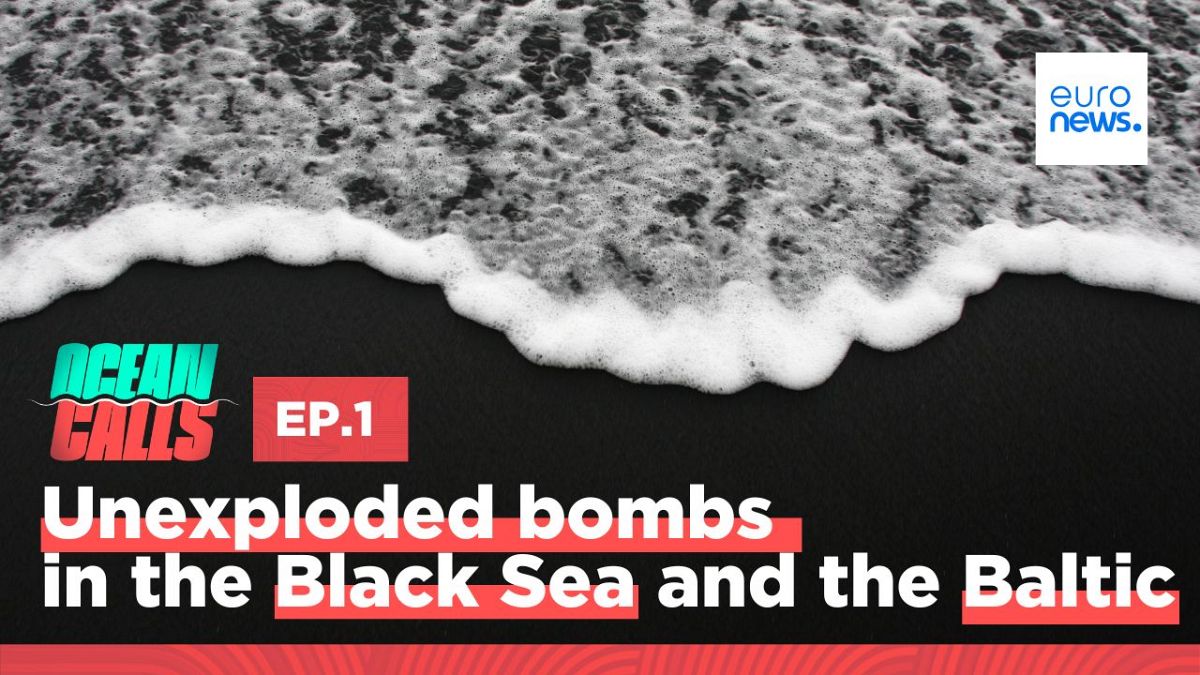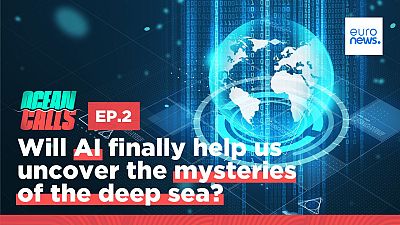In this episode of Ocean Calls, we discuss the complicated problem of dumped munitions and unexploded bombs in both the Black Sea and the Baltic. What is the environmental impact of these weapons in the water and what can we do about it?
“Can we call it a catastrophe? Yes, we can.” In this episode of ‘Ocean Calls’, Ukrainian marine biologist Mikhail Son is referring to the destruction of the Kakhovska dam on the Dnieper River in the early hours of June 6th last year.
The explosion released a vast amount of freshwater, sweeping along nearly everything in its path to the sea and leading to devastating pollution.
Listen to the episode:
“Various terrestrial animals and plants, fish, and invertebrates ended up in the seawater and perished,” explains Son, who is the Deputy Director of the Institute of Marine Biology at the National Academy of Sciences of Ukraine.
On top of that, he says the dam's destruction brought dangerous chemicals from the land and changed ecosystems in the area. Hundreds of millions of Black Sea mussels, considered indicators of water quality, died as a result.
The Kakhovska dam destruction is only one of the pressures on the region’s marine environment linked to Russia’s unprovoked invasion of Ukraine.
The effects of the ongoing war on the sea are being felt far beyond the coastlines of the two countries.
What exactly are the effects of the war and can we do anything to protect the environment?
With little data available, for this episode, we turned to the experience of WWII, which saw millions of tons of munitions dumped in the Baltic and North seas in an attempt to demilitarise Europe.
Ticking time bombs
With an estimated 1.6 million tons of unexploded bombs, Germany was “packed with munitions” following the First and the Second World Wars. As they sought to rapidly demilitarise the country, the Allies decided to “throw it all into the water”, according to Jens Greinert, head of the Deep Sea Monitoring Research Unit at the GEOMAR Helmholtz Centre for Ocean Research in Kiel.
Called "ticking time bombs," around 40,000 tonnes of chemical weapons were dumped into the Baltic Sea alone, according to estimates by the Baltic Marine Environment Protection Commission (HELCOM).
To begin to deal with this issue, the European Union has invested in several methods to detect unexploded munitions, such as ultra-high-resolution 3D sub-bottom profiling and autonomous underwater vehicles that magnetically map the seafloor.
“We have a map that's pretty accurate of where the dumping grounds are, and also maps that show where some munitions have been encountered. But we also know that's not the full story, that there are munitions that are elsewhere,” says Markus Helavuori, professional secretary at HELCOM.
Coastal waters around Europe are scattered with unexploded weapons (UXO), including bombs, grenades, and naval mines. The presence of UXO poses a threat to human health, marine ecosystems, and biodiversity.
“We take water samples and sediment samples (in the Baltic), and there is not one water sample where we can't detect munition compounds,” says Jens, highlighting that in the future, as the weapons degrade, more toxic substances will get into the water.
Over the past decades, there have been efforts to remove unexploded munitions from European waters with EU-funded projects like BASTA and ExPloTect, but most of the cleanup has been done by the companies building marine infrastructure, like offshore wind parks or cable routes and pipelines.
“There isn't any coordinated cleaning up going on... I would say one thing that, from the HELCOM’s point of view, is still missing is agreed procedures of how to do this,” says Markus.
One of the main issues, he adds, in establishing the procedures is legal responsibility for contamination: “According to the United Nations Convention on the Law of the Sea, the country is responsible for taking any action that they can to reduce the risks and harm to the environment in their waters. But this is, you know, a complicated legal question.”
What can be done to get rid of unexploded UXO?
According to Jens, there are several methods of dealing with UXO in the sea. One common approach is controlled detonation. “Sometimes you have an object that you cannot touch and that you cannot move, but that you have to get rid of,” he explains, adding that this method, has a lot of setbacks for the environment. “You have a high-pressure wave. So mammals could get severely injured, they could die. And you potentially also contaminate the area with these carcinogenic explosives”.
Another method is building a sort of a sarcophagus around the bomb burials. “You can do this. But you postpone the issue to the next or second next generation. It's not sustainable,” reacts Jens.
According to him, the safest approach involves specialised equipment to safely remove the UXO from the sea and transport it to a secure location for disposal.
Which of these pieces of research and information can be used in helping deal with the situation in Ukraine? And in what way what is happening today in the Black Sea is different from what was happening during WWII?
If you want to learn more, listen to the full episode of 'Ocean Calls' in which Euronews science reporter Jeremy Wilks and his guests will discuss the complicated legacy of WWII and explore whether we can help save the Black Sea or at least make future clean-up efforts a bit easier to manage.
At the end of this episode, you’ll hear a mysterious tale of the oldest and best-preserved shipwreck ever found, thanks to the unique properties of the Black Sea.
'Ocean Calls' is produced in partnership with the European Commission’s Directorate-General for Maritime Affairs and Fisheries.









